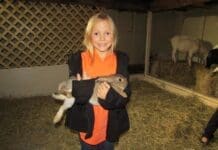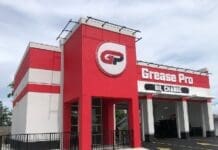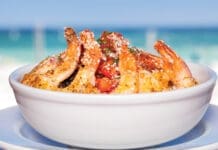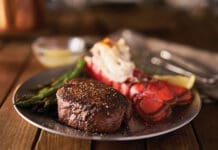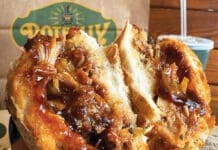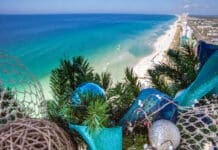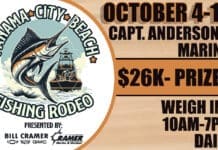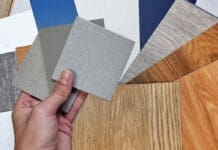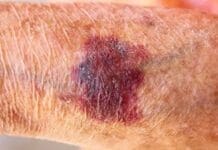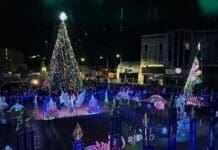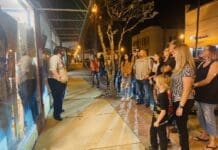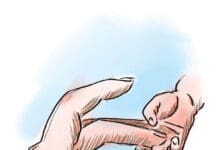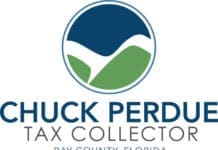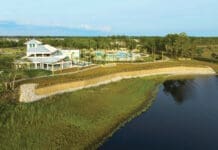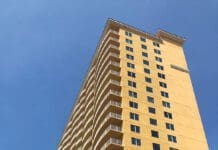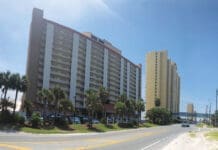 By Julie McConnell, UF/IFAS Extension Bay County
By Julie McConnell, UF/IFAS Extension Bay County
A couple of months ago I wrote about my favorite tree, the bald cypress, and thought it might be fun to share some of my other garden favorites this summer. I only have space for about 500 words and a few pictures, so I’ll need to limit myself to a few plants per article. Since I started with a tree, I decided we would take a vertical step down to shrubs this month.
 Limelight Hydrangea is a show stopper
Limelight Hydrangea is a show stopper
Hydrangea paniculata ‘Limelight’ has been a favorite of mine for over a decade because of the spectacular blooms that peak in my garden at the same time everything else is looking hot and tired. Large pyramidal-shaped panicles of flowers start out light green then transition into bright white making this shrub hard to miss! Although not native to North America, the flowers attract bees, beetles, and other beneficial insects to the garden, and it does not pose an invasion threat. Limelight hydrangea thrives in full sun to part-shade and is tolerant of many soil types. Mature size is 6-8’ tall by 6-8’ wide or may be sold in tree-form with a single trunk (tree-form may need occasional shape pruning to avoid breakage). Once established it has moderate drought tolerance, however it is not tolerant of salt spray. Note this hydrangea leafs out after winter much later than other hydrangea types, but it is worth the wait once new growth begins!
Coontie is a great tropical looking native evergreen
Coontie (Zamia floridana) is often miscalled Coontie Palm but is a cycad with ancient roots. Coontie is the only cycad native to North America and lucky for us it thrives in Florida! This evergreen shrubby plant grows 2-4’ tall by 3-5’ wide. It has glossy green leaflets on compound leaves that originate from the crown in a spiral fashion. Adapted to poor soil, sun or shade, this plant is easy to incorporate into any landscape. Drought and salt tolerance make it ideal for coastal properties. In very cold winters coontie can sustain some freeze damage, but if established and otherwise healthy they typically will recover lost foliage the following summer.
 Darrow’s Blueberry isn’t just for the birds
Darrow’s Blueberry isn’t just for the birds
I love production blueberries such as Rabbiteye varieties for their fruit, but let’s face it – they can look a bit rangy when you are trying to maximize yield, but there is a tidy alternative that fits just about anywhere. Vaccinium darrowii (Darrow’s Blueberry) is a native evergreen fruiting blueberry that only grows about 3’ tall and wide. Admittedly, the fruit are not as big and juicy as other blueberry types, but they are sweet enough to eat and are great for birds. The evergreen description doesn’t do this plant justice, the leaves emerge with a purplish tint then mature into a blueish green. In winter, the entire shrub gets a reddish tint on the outer leaves. Small pinkish-white flowers in the spring bring in the bees followed by blueberries make it attractive year-round. Like other blueberries, Darrow’s does require acidic soil, pH 4.0-5.5 is ideal. It is also not salt tolerant, so do not place in a location subjected to salt spray.
More reading:
Coontie Cycad https://edis.ifas.ufl.edu/publication/FP617
Hydrangea paniculata https://edis.ifas.ufl.edu/publication/st298
Darrow’s Blueberry https://nwdistrict.ifas.ufl.edu/hort/2014/04/15/add-this-shrub-for-an-edible-landscape/
An Equal Opportunity Institution. UF/IFAS Extension, University of Florida, Institute of Food and Agricultural Sciences, Andra Johnson, Dean. Single copies of UF/IFAS Extension publications (excluding 4-H and youth publications) are available free to Florida residents from county UF/IFAS Extension offices.


